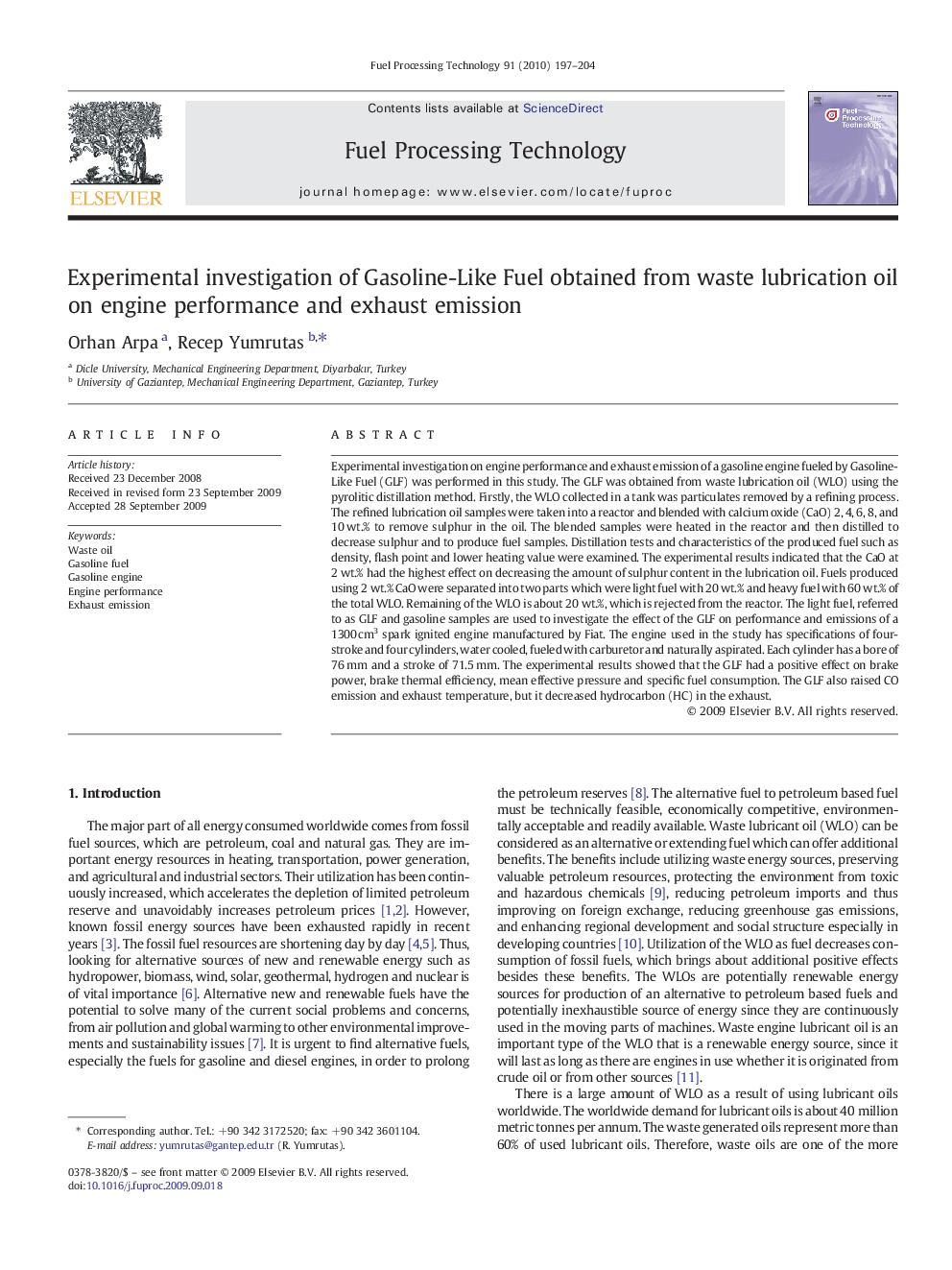| Article ID | Journal | Published Year | Pages | File Type |
|---|---|---|---|---|
| 210936 | Fuel Processing Technology | 2010 | 8 Pages |
Experimental investigation on engine performance and exhaust emission of a gasoline engine fueled by Gasoline-Like Fuel (GLF) was performed in this study. The GLF was obtained from waste lubrication oil (WLO) using the pyrolitic distillation method. Firstly, the WLO collected in a tank was particulates removed by a refining process. The refined lubrication oil samples were taken into a reactor and blended with calcium oxide (CaO) 2, 4, 6, 8, and 10 wt.% to remove sulphur in the oil. The blended samples were heated in the reactor and then distilled to decrease sulphur and to produce fuel samples. Distillation tests and characteristics of the produced fuel such as density, flash point and lower heating value were examined. The experimental results indicated that the CaO at 2 wt.% had the highest effect on decreasing the amount of sulphur content in the lubrication oil. Fuels produced using 2 wt.% CaO were separated into two parts which were light fuel with 20 wt.% and heavy fuel with 60 wt.% of the total WLO. Remaining of the WLO is about 20 wt.%, which is rejected from the reactor. The light fuel, referred to as GLF and gasoline samples are used to investigate the effect of the GLF on performance and emissions of a 1300 cm3 spark ignited engine manufactured by Fiat. The engine used in the study has specifications of four-stroke and four cylinders, water cooled, fueled with carburetor and naturally aspirated. Each cylinder has a bore of 76 mm and a stroke of 71.5 mm. The experimental results showed that the GLF had a positive effect on brake power, brake thermal efficiency, mean effective pressure and specific fuel consumption. The GLF also raised CO emission and exhaust temperature, but it decreased hydrocarbon (HC) in the exhaust.
